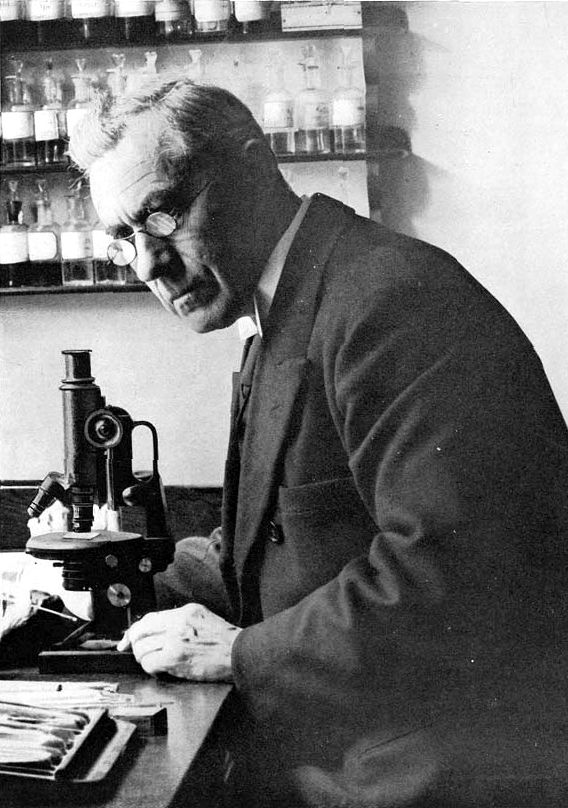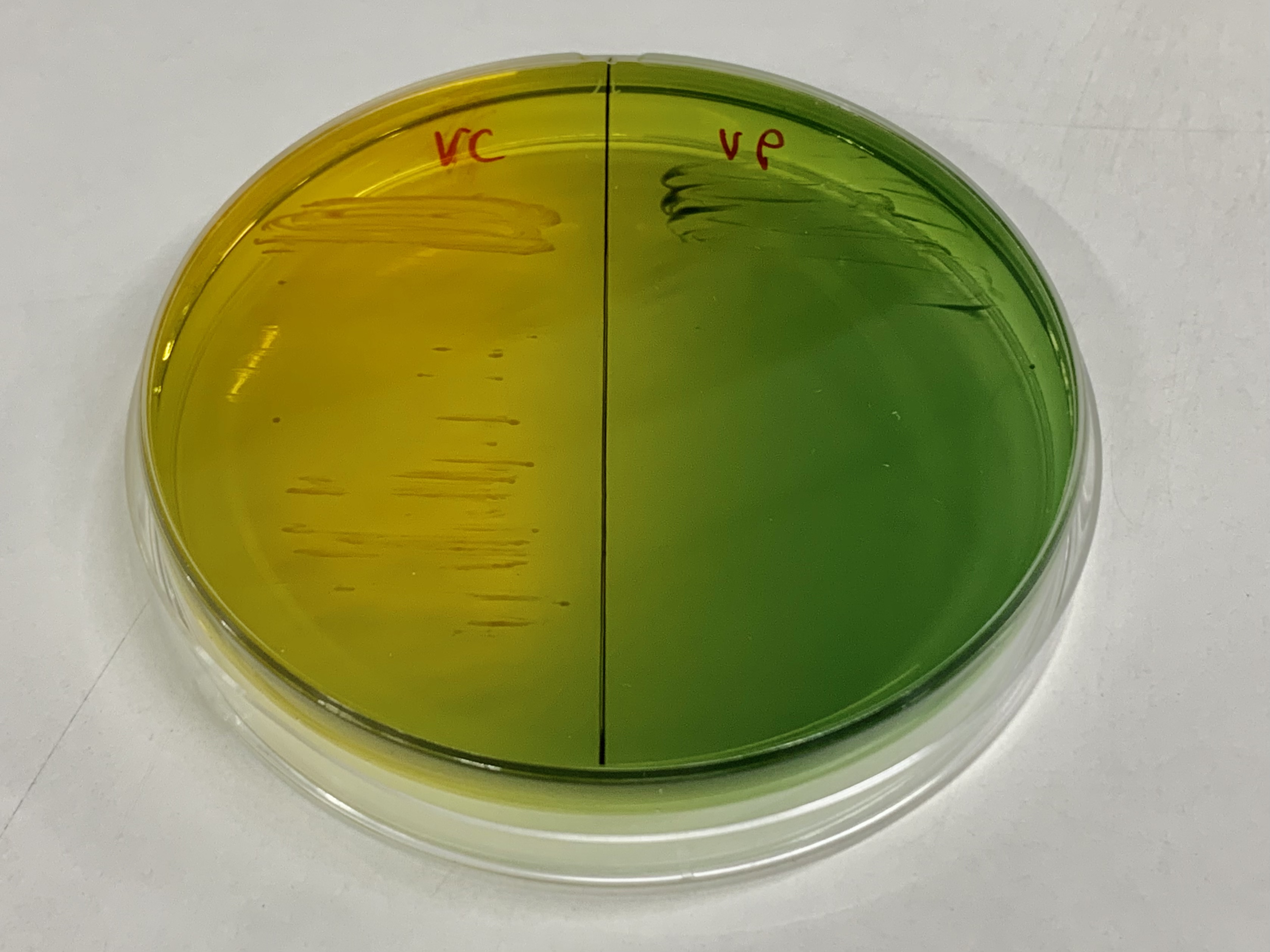|
Enrichment Culture
Enrichment culture is the use of certain growth media to favor the growth of a particular microorganism over others, enriching a sample for the microorganism of interest. This is generally done by introducing nutrients or environmental conditions that only allow the growth of an organism of interest. Enrichment cultures are used to increase a small number of desired organisms to detectable levels. This allows for the detection and identification of microorganisms with a variety of nutritional needs. Enrichment cultures are often used for soil and fecal samples. History The microbiologist (and botanist) Martinus Beijerinck is credited with developing the first enrichment cultures. Sergei Winogradsky also experimented on bacteria using different cultures. Examples Media with a high salt concentration will select for halophiles. Selenite broth is used to selectively isolate Salmonella species. Alkaline Peptone Water is used for the cultivation of vibrio. Both these examples are clin ... [...More Info...] [...Related Items...] OR: [Wikipedia] [Google] [Baidu] |
Growth Media
A growth medium or culture medium is a solid, liquid, or semi-solid designed to support the growth of a population of microorganisms or cells via the process of cell proliferation or small plants like the moss ''Physcomitrella patens''. Different types of media are used for growing different types of cells. The two major types of growth media are those used for cell culture, which use specific cell types derived from plants or animals, and those used for microbiological culture, which are used for growing microorganisms such as bacteria or fungi. The most common growth media for microorganisms are nutrient broths and agar plates; specialized media are sometimes required for microorganism and cell culture growth. Some organisms, termed fastidious organisms, require specialized environments due to complex nutritional requirements. Viruses, for example, are obligate intracellular parasites and require a growth medium containing living cells. Types The most common growth media fo ... [...More Info...] [...Related Items...] OR: [Wikipedia] [Google] [Baidu] |
Microorganism
A microorganism, or microbe,, ''mikros'', "small") and ''organism'' from the el, ὀργανισμός, ''organismós'', "organism"). It is usually written as a single word but is sometimes hyphenated (''micro-organism''), especially in older texts. The informal synonym ''microbe'' () comes from μικρός, mikrós, "small" and βίος, bíos, "life". is an organism of microscopic size, which may exist in its single-celled form or as a colony of cells. The possible existence of unseen microbial life was suspected from ancient times, such as in Jain scriptures from sixth century BC India. The scientific study of microorganisms began with their observation under the microscope in the 1670s by Anton van Leeuwenhoek. In the 1850s, Louis Pasteur found that microorganisms caused food spoilage, debunking the theory of spontaneous generation. In the 1880s, Robert Koch discovered that microorganisms caused the diseases tuberculosis, cholera, diphtheria, and anthrax. Because mi ... [...More Info...] [...Related Items...] OR: [Wikipedia] [Google] [Baidu] |
Martinus Beijerinck
Martinus Willem Beijerinck (, 16 March 1851 – 1 January 1931) was a Dutch microbiologist and botanist who was one of the founders of virology and environmental microbiology. He is credited with the discovery of viruses, which he called "''contagium vivum fluidum''". Life Early life and education Born in Amsterdam, Beijerinck studied at the Technical School of Delft, where he was awarded the degree of Chemical Engineer in 1872. He obtained his Doctor of Science degree from the University of Leiden in 1877. At the time, Delft, then a Polytechnic, did not have the right to confer doctorates, so Leiden did this for them. He became a teacher in microbiology at the Agricultural School in Wageningen (now Wageningen University) and later at the ''Polytechnische Hogeschool Delft'' (Delft Polytechnic, currently Delft University of Technology) (from 1895). He established the Delft School of Microbiology. His studies of agricultural and industrial microbiology yielded fundamental disco ... [...More Info...] [...Related Items...] OR: [Wikipedia] [Google] [Baidu] |
Sergei Winogradsky
Sergei Nikolaievich Winogradsky (or Vinohradsky; published under the name of Sergius Winogradsky or M. S. Winogradsky from Ukrainian Mykolayovych Serhiy; uk, Сергій Миколайович Виноградський; 1 September 1856 – 25 February 1953) was a Ukrainian microbiologist, ecologist and soil scientist who pioneered the cycle-of-life concept. Winogradsky discovered the first known form of lithotrophy during his research with '' Beggiatoa'' in 1887. He reported that ''Beggiatoa'' oxidized hydrogen sulfide (H2S) as an energy source and formed intracellular sulfur droplets. This research provided the first example of lithotrophy, but not autotrophy. His research on nitrifying bacteria would report the first known form of chemoautotrophy, showing how a lithotroph fixes carbon dioxide (CO2) to make organic compounds. He is best known in school science as the inventor of the Winogradsky Column technique for the study of sediment microbes. Biography Winograds ... [...More Info...] [...Related Items...] OR: [Wikipedia] [Google] [Baidu] |
Halophile
The halophiles, named after the Greek word for "salt-loving", are extremophiles that thrive in high salt concentrations. While most halophiles are classified into the domain Archaea, there are also bacterial halophiles and some eukaryotic species, such as the alga ''Dunaliella salina'' and fungus ''Wallemia ichthyophaga''. Some well-known species give off a red color from carotenoid compounds, notably bacteriorhodopsin. Halophiles can be found in water bodies with salt concentration more than five times greater than that of the ocean, such as the Great Salt Lake in Utah, Owens Lake in California, the Urmia Lake in Iran, the Dead Sea, and in evaporation ponds. They are theorized to be a possible analogues for modeling extremophiles that might live in the salty subsurface water ocean of Jupiter's Europa and similar moons. Classification Halophiles are categorized by the extent of their halotolerance: slight, moderate, or extreme. Slight halophiles prefer 0.3 to 0.8 M (1.7 to 4.8%� ... [...More Info...] [...Related Items...] OR: [Wikipedia] [Google] [Baidu] |
Selenite Broth
Selenite broth is used as a selective medium for the isolation of '' Salmonella'' species. Selenite broth was originated by Leifson, while observing good recovery of Salmonella spp. and reduced growth of fecal coliforms. Selenite broth is used as a selective enrichment for the cultivation of Salmonella spp. that may be present in small numbers and competing with intestinal flora. This medium must not be autoclaved. Once prepared, it is steamed at 100°C for 30 minutes. There should be a very slight red precipitate. To minimize the risk of teratogenicity to workers, sodium selenite Sodium selenite is the inorganic compound with the formula Na2SeO3. This salt is a colourless solid. The pentahydrate Na2SeO3(H2O)5 is the most common water-soluble selenium compound. Synthesis and fundamental reactions Sodium selenite usually i ... must be added separately to the medium. It has a pH of approximately 7.1. Selenite broth gives pale or colorless colonies. Selenite broth contains: R ... [...More Info...] [...Related Items...] OR: [Wikipedia] [Google] [Baidu] |
Salmonella
''Salmonella'' is a genus of rod-shaped (bacillus) Gram-negative bacteria of the family Enterobacteriaceae. The two species of ''Salmonella'' are ''Salmonella enterica'' and ''Salmonella bongori''. ''S. enterica'' is the type species and is further divided into six subspecies that include over 2,600 serotypes. ''Salmonella'' was named after Daniel Elmer Salmon (1850–1914), an American veterinary surgeon. ''Salmonella'' species are non-spore-forming, predominantly motile enterobacteria with cell diameters between about 0.7 and 1.5 μm, lengths from 2 to 5 μm, and peritrichous flagella (all around the cell body, allowing them to move). They are chemotrophs, obtaining their energy from oxidation and reduction reactions, using organic sources. They are also facultative anaerobes, capable of generating ATP with oxygen ("aerobically") when it is available, or using other electron acceptors or fermentation ("anaerobically") when oxygen is not available. ''Salmonella'' spe ... [...More Info...] [...Related Items...] OR: [Wikipedia] [Google] [Baidu] |
Vibrio
''Vibrio'' is a genus of Gram-negative bacteria, possessing a curved-rod (comma) shape, several species of which can cause foodborne infection, usually associated with eating undercooked seafood. Being highly salt tolerant and unable to survive in fresh water, ''Vibrio'' spp. are commonly found in various salt water environments. ''Vibrio'' spp. are facultative anaerobes that test positive for oxidase and do not form spores. All members of the genus are motile. They are able to have polar or lateral flagellum with or without sheaths. ''Vibrio'' species typically possess two chromosomes, which is unusual for bacteria. Each chromosome has a distinct and independent origin of replication, and are conserved together over time in the genus. Recent phylogenies have been constructed based on a suite of genes (multilocus sequence analysis). O. F. Müller (1773, 1786) described eight species of the genus ''Vibrio'' (included in Infusoria), three of which were spirilliforms. Some of the o ... [...More Info...] [...Related Items...] OR: [Wikipedia] [Google] [Baidu] |
Microbiological Culture
A microbiological culture, or microbial culture, is a method of multiplying microbial organisms by letting them reproduce in predetermined culture medium under controlled laboratory conditions. Microbial cultures are foundational and basic diagnostic methods used as a research tool in molecular biology. The term ''culture'' can also refer to the microorganisms being grown. Microbial cultures are used to determine the type of organism, its abundance in the sample being tested, or both. It is one of the primary diagnostic methods of microbiology and used as a tool to determine the cause of infectious disease by letting the agent multiply in a predetermined medium. For example, a throat culture is taken by scraping the lining of tissue in the back of the throat and blotting the sample into a medium to be able to screen for harmful microorganisms, such as ''Streptococcus pyogenes'', the causative agent of strep throat. Furthermore, the term culture is more generally used informally ... [...More Info...] [...Related Items...] OR: [Wikipedia] [Google] [Baidu] |
Auxanography
Auxanography is the study of the effects of changes in environment on the growth of microorganisms, by means of auxanograms. It was first devised by BeijerinckBeijerinck, M. W. 1889. L'auxanographie, ou la méthode de l'hydrodiffusion dans la gélatine appliquée aux recherches microbiologiques. Arch. Néerl. Sc. 23:367-372. for testing the effect of various nutrient media upon bacteria.JANA GANA MANA – auxanography The bacteria are plated out in a medium known to be poorly adapted for their , and then drops of the tested solutions are added to the surface of the plate. If the requisite nutrient has been added, the bacteria will develop rapidly in these spots. ... [...More Info...] [...Related Items...] OR: [Wikipedia] [Google] [Baidu] |
Microbiology
Microbiology () is the scientific study of microorganisms, those being unicellular (single cell), multicellular (cell colony), or acellular (lacking cells). Microbiology encompasses numerous sub-disciplines including virology, bacteriology, protistology, mycology, immunology, and parasitology. Eukaryotic microorganisms possess membrane-bound organelles and include fungi and protists, whereas prokaryotic organisms—all of which are microorganisms—are conventionally classified as lacking membrane-bound organelles and include Bacteria and Archaea. Microbiologists traditionally relied on culture, staining, and microscopy. However, less than 1% of the microorganisms present in common environments can be cultured in isolation using current means. Microbiologists often rely on molecular biology tools such as DNA sequence based identification, for example the 16S rRNA gene sequence used for bacteria identification. Viruses have been variably classified as organisms, as they have ... [...More Info...] [...Related Items...] OR: [Wikipedia] [Google] [Baidu] |



.jpg)
.jpg)

.png)